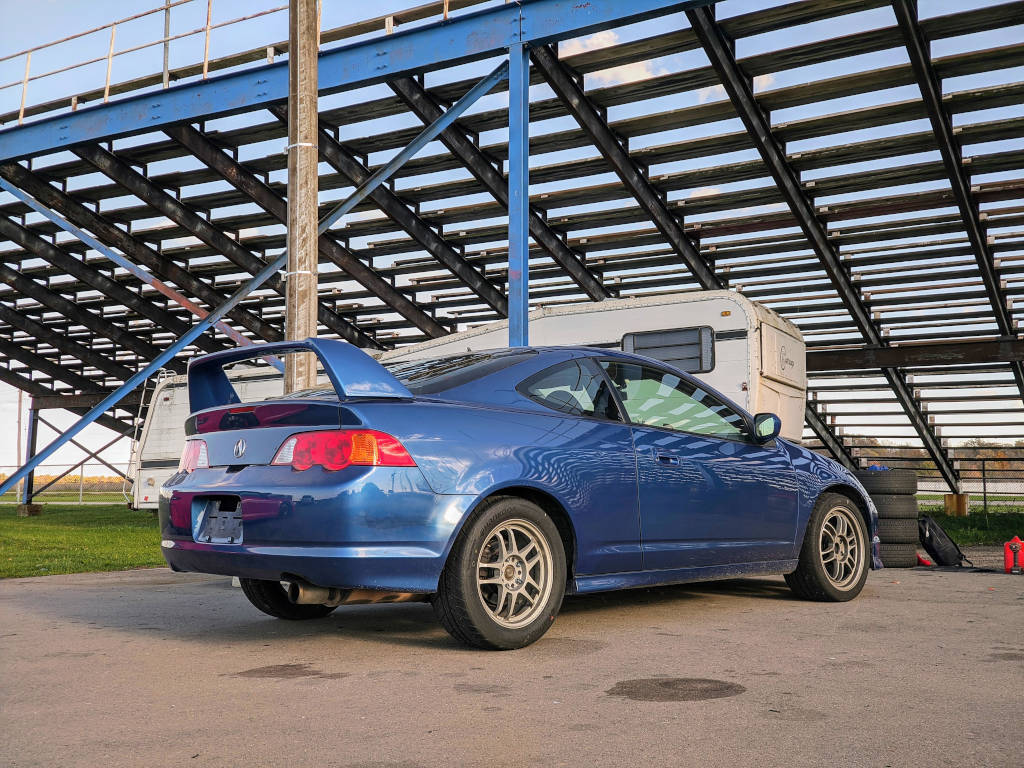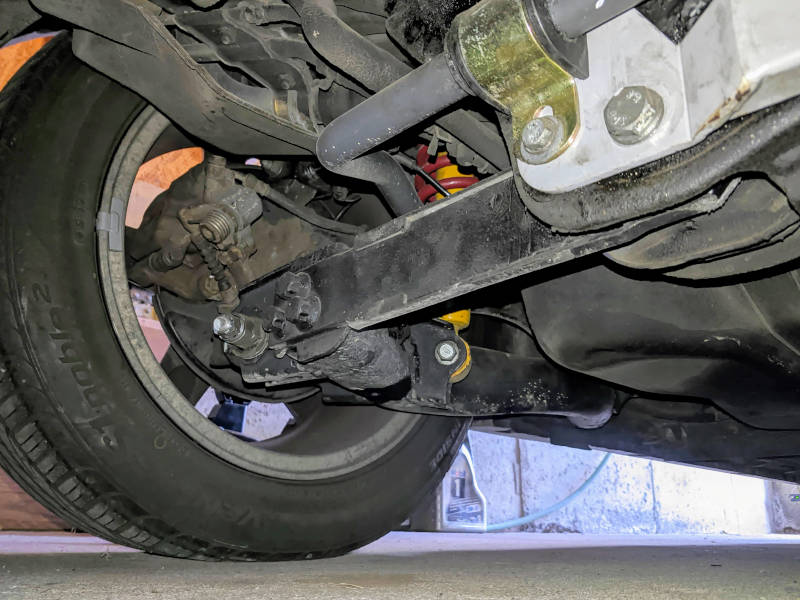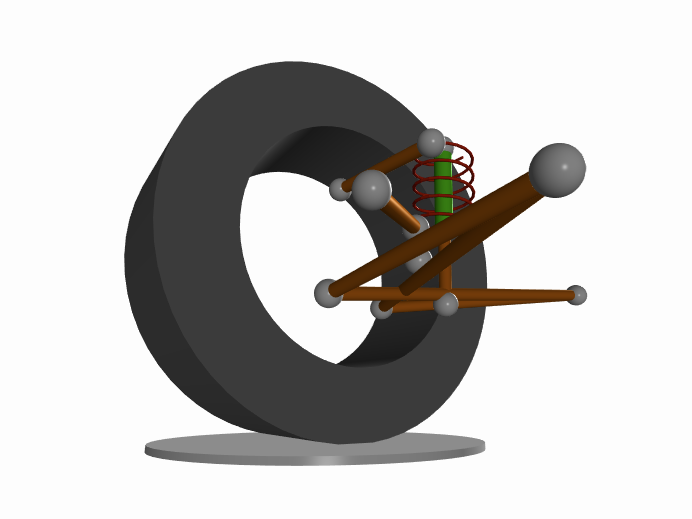Kinematic curves of the Acura RSX rear suspension
This article is part of a series on the kinematic simulation and analysis of the Acura RSX suspension. To learn more, feel free to check my other posts:
Front Suspension
- Analysis of the Acura RSX front suspension geometry
- Kinematic curves of the Acura RSX front suspension
- Motion ratio curves of the Acura RSX front suspension
- Kinematic roll centre analysis of the Acura RSX front suspension
Rear Suspension
- You are here! - Kinematic curves of the Acura RSX rear suspension
- Motion ratio curves of the Acura RSX rear suspension
- Kinematic roll centre analysis of the Acura RSX rear suspension
Full Vehicle

Modern vehicle suspension systems are carefully designed to react handling loads while maintaining good ride and comfort. Performance objectives are often at odds with chassis packaging where cabin space takes precedence over suspension packaging. For performance enthusiasts hoping to operate the car at its limits, it means dealing with compromises from the factory.
The Acura RSX is an example of a car that has this challenge. As a daily driver, its compact rear suspension makes it a very practical car. From a performance perspective, the tradeoffs to achieve this are less clear. To answer this, we ran a series of kinematic studies.
In this article, we discuss the wheel plane control of the Acura RSX rear suspension. Metrics such as half track, camber and toe variation are examined.
Suspension Design
The Acura RSX rear suspension features an H-arm and camber link. The H-arm is formed by the lower control arm and is responsible for reacting braking and cornering forces. The camber link forms the upper control arm and reacts only cornering forces. Both lower and upper control arms locate the front-view kinematic roll centre. The side-view kinematic instant centre is controlled solely by the lower control arm. The rear suspension is pictured below with the real life and virtual representations shown on the left and right respectively.


This suspension topology is cost effective and makes few compromises on kinematic performance. Its compact size and reduced chassis attachment points contribute to its cost effectiveness. Aftermarket adjustment to the geometry is limited since the lower control arm has the responsibility of four links. Practically any major change to the suspension geometry would require a completely new knuckle or lower control arm. Fortunately, we can analyze the design to determine how to make the most of it without resorting to modification.
Kinematic Curves
Tire force and moment properties are sensitive to inputs like slip and inclination angle. The chassis has some control over these inputs by carefully designing the suspension to move the wheel in a certain way. In this context, kinematic curves describe the wheel plane motion without considering forces or compliances.
Half Track Variation
The half track variation is the lateral displacement of the tire contact patch. This motion causes a lateral velocity to develop at the contact patch, thus generating a slip angle. It is also a first look at how the instant centre might develop. A positive value indicates an increasing half track.
The half track nominally increases at a rate of 0.213 mm per mm of bump. The rate of change is always positive within this range of travel.
Camber Variation
The camber angle is the lean angle of the wheel relative to the chassis centre plane. This is not the inclination angle experienced at the contact patch. A negative camber angle indicates that the top of the wheel is leaning inwards towards the chassis.
At around -30 of droop travel, the sign of the camber gain inverts. However, for the remaining bump travel, the camber gain is positive. You can expect a gain of -0.014 deg per mm of bump near nominal ride height. This number will be more negative if the ride height is reduced.
Toe Variation
The toe angle is the angle between the wheel direction and the vehicle centre plane. This is the rear axle’s contribution to bump and roll steer effects. A positive value indicates toe in.
The toe angle nominally increases at a rate of 0.003 deg per mm of bump. At first glance, the semi-trailing-like lower control arm suggests lots of toe variation; however, this effect is likely offset by the knuckle lower attachment points.
Final Comments
The rear suspension of the Acura RSX shows good control over the wheel plane motion. Half track variation is predictable throughout the travel range. Interestingly, there is very little kinematically induced toe variation. While the camber gain changes signs, it does so in droop.
The kinematic performance of the Acura RSX rear suspension thus far is promising. It is much more predicable than the front suspension and displays fewer oddities. This makes it simpler to understand and hopefully easier to set up.
Acknowledgements
This work is made possible with help from Ping Zhang at Formula Delta who shared the suspension points for the Acura RSX. You can learn more about Ping and his time attack project on his website, Facebook or Instagram.
References
- Milliken, William F., and Douglas L. Milliken. Race car vehicle dynamics. Vol. 400. Warrendale: Society of Automotive Engineers, 1995.
- Blundell, Michael, and Damian Harty. Multibody systems approach to vehicle dynamics. Elsevier, 2004.


